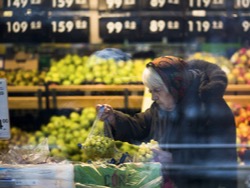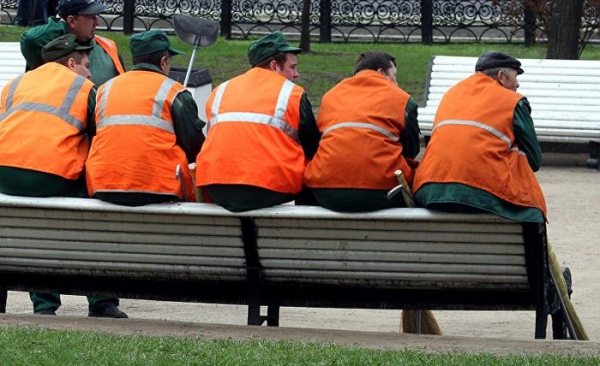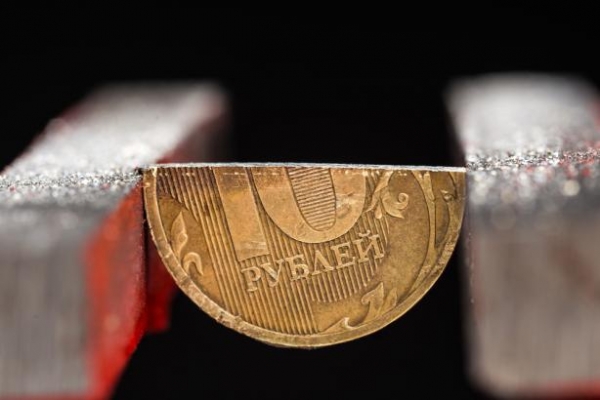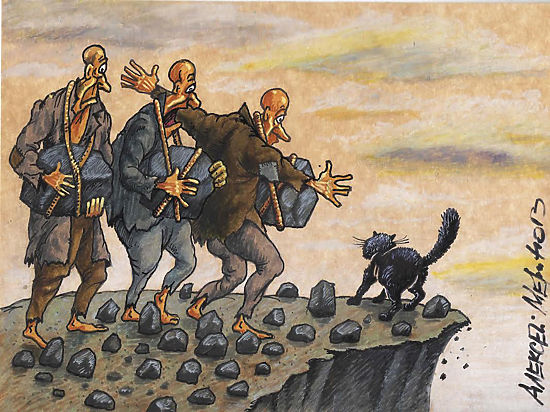
Potential growth rates of the Russian economy fell to nearly zero by reducing the country’s working age population. It is expected that in the coming years the rate of decline will increase. If this is the case, then, the rise of the Russian economy after two years of recession, is likely to be negligible.
Perhaps the potential growth of the Russian economy fell to nearly zero by reducing the country’s working age population.
The number of able-bodied population of Russia has reached in 2006 the highest rate in 90 million people, and has since fallen by five million. It is expected that in the coming years the rate of decline will increase.
“In the next five years the working age population will shrink by one million people [a year] on the background of decreasing inflow of labour from categories of the population, “have not reached working age”, and also due to the fact that a large number of people reach the retirement age of 55 for women and 60 years for men,” says chief economist for Russia and CIS from Bank of America Merrill Lynch Vladimir Osakovsky.
The first diagram shows the change — historical and projected (small increase in 2015 was the result of the annexation of Crimea, which the Federal statistics service of Russia, Rosstat, is now considered to be Russian).
According to Mr. Osakovsky, as a result, potential economic growth of Russia “is close to zero or even dropped below zero in 2016”. And, as you can see in the second chart, the growth of total factor productivity is unlikely to exceed the reduction in the quantity of labour and capital that Russia is able to use.
If this is the case, then, the rise of the Russian economy after two years of recession, is likely to be negligible. In addition, the decline in Russia’s working age population has a number of positive and negative long-term consequences.
The positive is that this is the longest lasting recession faced by the Russian economy over the past 20 years, has not led to a significant growth of unemployment, the level of which (which contains today of 5.8%) is one of the lowest in Russia since the proclamation of independence in 1991.
In addition, the unemployment rate remains low, despite the increase in the level of economic activity of the population — the percentage working or actively seeking work employable population.
“Although total employment since 2007-2008, it is almost on the same level, and the number of working-age population over the same period actually declined, the level of economic activity rose steadily and reached in 2015 69% — highest in post-Soviet history of Russia”, — said Vladimir Osakovsky.
Although this development has helped to protect ordinary Russians from all negative consequences of the recession may limit the ability of the Central Bank to significantly lower interest rates compared to its current level of 11%.
In the currently low level of consumer demand due to the reduction of the working-age population, apparently, allows to control inflationary pressures. But the situation could change quickly.
According to the forecast of Mr. Osakovsky, economic growth will again become positive in the second half of 2016, and in 2017 will amount to approximately 1.1%.
This — combined with the continued downsizing of the working — age population means that by the end of next year negative gap between actual and potential production can be eliminated, said Osakovsky.
“Even technical acceleration (based on the relationship of growth to baseline) real GDP growth up to 1.5% may cause concerns about overheating of the economy,” said Vladimir Osakovsky.
“In particular, in the presence of a labor market with high demand for labour in General, any significant recovery in economic growth and demand for labour should soon lead to more sustainable growth of nominal and real wages. And sooner or later may become a factor contributing to inflationary pressure.”
Chief economist at Moscow investment Bank “the Renaissance the Capital” Charles Robertson (Charles Robertson) is somewhat more optimistic regarding the growth of the Russian economy.
It comes from the fact that in emerging market economies, the initial level of potential growth is usually 3%. Despite the fact that the number of able-bodied population of Russia is shrinking by 1.2% per year, he argues that potential GDP growth could reach 1.8% per year.
He also believes that the decline of the country’s GDP “has no such special meaning” for ordinary working people, as GDP per capita grows. Although it is more important for those who invest in securities (as well as increasing the number of people and the acceleration of GDP growth should lead to accelerating growth in wages and increasing exchange rate of the shares) and who are proud of the reputation of his country on the world stage.
Mr. Robertson notes that the phenomenon of reduction in the working age population, can be observed not only in Russia. As you can see on the third chart, this trend is common in many countries of Eastern Europe and parts of Asia, and in Ukraine and in Bulgaria, the working-age population is declining even faster than in Russia.
However, Russia is in a very difficult position — in any case, if you keep in mind its ability to increase the overall GDP growth rate.
Mr. Robertson reviewed the unemployment rate and the level of economic activity in those countries where the working age population is shrinking. He was concerned those countries which have experienced low unemployment and high economic activity, because in these countries, the excess labor that could be involved.
According to the latest schedule in the “problem corner” are Germany, China, Estonia, Lithuania and the Czech Republic and Russia (these figures for a few months are outdated, but the General picture is reflected).

Janitors guest workers
Despite this, the difficult situation of Russia worried about Robertson’s less than the situation in which, say, China. Russia’s total population is 144 million people (not counting Crimea), while replenishing the workforce at the expense of workers from neighbouring countries — Georgia, Armenia, Ukraine and various “Stans” — Central Asian republics. China to achieve the same results, will need much more workers from abroad, given its own population, which is 1.4 billion people.
If on the Russian labor market will experience severe shortages, it is possible to increase the flow of these migrants, and although many visitors may be less qualified than the average Russian, migrant workers from countries such as Georgia and Ukraine will be with the Russians on the same level.
Charles Robertson argues that President Vladimir Putin has made every effort in order not to accuse of all sins of migrant workers, even when unemployment has increased.
“I think he understands that Russia needs labor. In some other countries there are politicians who exploit it — but in Russia, this is not,” he says.
Vladimir Osakovsky not so sure and said that although the flows of migrant workers has declined, Russia by the number of foreign workers already ranks second in the world after the USA, which limits its ability to increase their number.
“Here in the country there is a significant labour shortage. And somehow change the situation quite difficult,” he says.
Another possible solution to the problem would be the growth in labor supply by raising the retirement age. When you consider that the average life expectancy of men makes only 63 years, it seems, the possibility of raising the retirement age of men to the level of over 60 years of age is quite limited.
However, given that female life expectancy is 75 years and the retirement age begins at 55 years old, live in retirement for 17 years longer than the average male, you need to sanitise solution to this anomalous situation.
Osakovsky agree with the need for pension reform, but he argues that this process is slow, while the retirement age increase is rarely more than six months a year — as in neighboring Belorussia.
Mr. Robertson is not against raising the retirement age, but, as he States, it will not help to make the Russian labor market more dynamic and organized from the point of view of entrepreneurship.
Citing data showing that in Russia from 2010 to 2020 the number of young people aged 16 to 24 years should be reduced from 12 to 7.5 million, he said that “when you lose those people who can easily treat the iPhone, create an e-mail application, opening a company and inherently dynamic, you lose the updates and innovative ideas” — those two qualities which are vital for the Russian economy.








